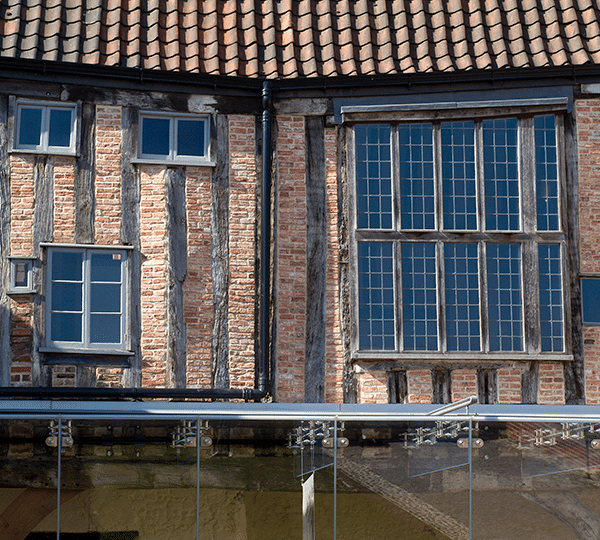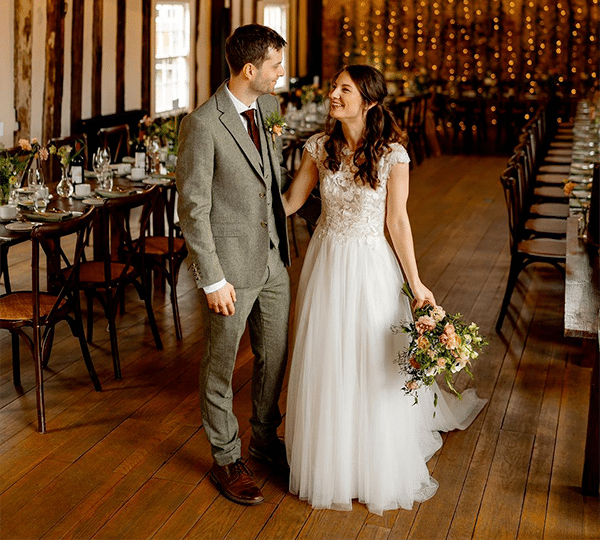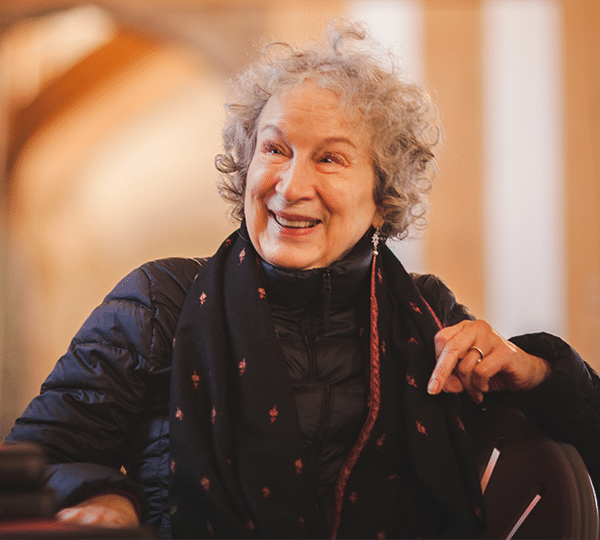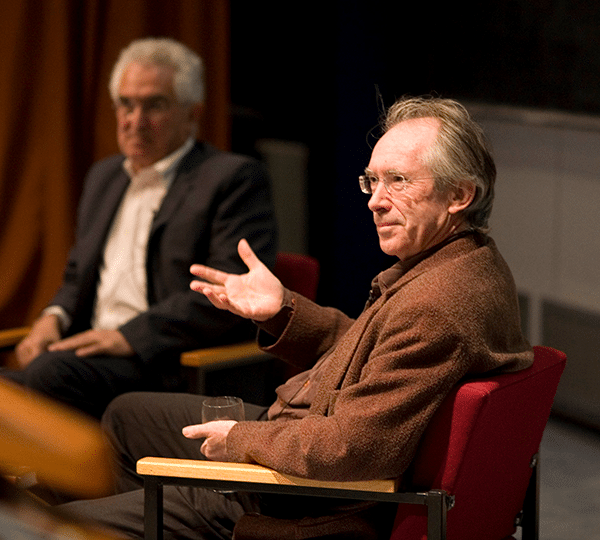Many residents and visitors of Norwich will be familiar with one of its medieval architectural gems, Dragon Hall – recognisable today by its wooden striped exterior on King St and as the home to the National Centre for Writing.
Some may also be familiar with the figure of Robert Toppes, a wealthy merchant who built the Hall in about 1427. But did you know that the history of the building actually stretches back for more than a thousand years?
Thanks to archaeological work between 1980 and 2005 far earlier signs of dwellings on the site were discovered: evidence of Saxon dwellings built around 1000 AD were unearthed beneath the building’s structure. We also know that in the late 13th century, the Abbey of Woburn in Bedfordshire had a fish processing operation with various outbuildings here; and in about 1330, an L-shaped domestic ‘hall house’ owned by John Page was built on the south side from Old Barge Yard. This part of the building, which pre-dates the Great Hall (and even the Black Death!), still stands today as the building’s main reception.
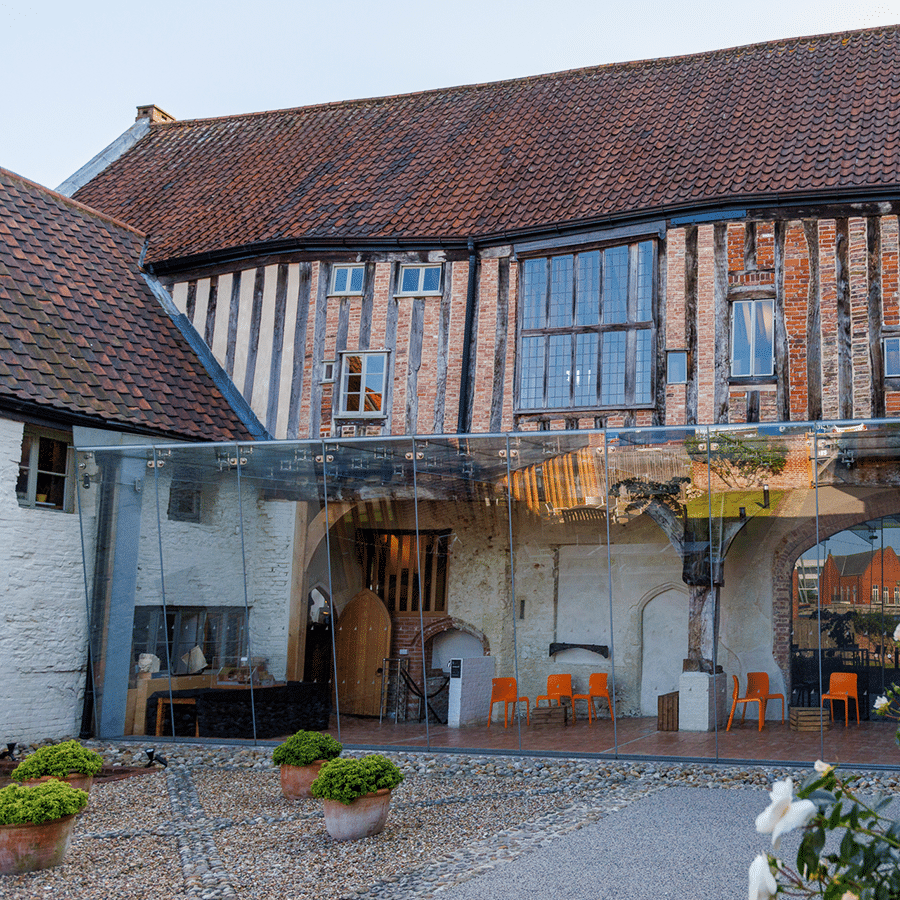
The iconic merchant’s hall that we know and love today was built by Robert Toppes in the 15th century. It was intended as a commercial building used to display, store and sell goods, and is unique in being the only trading hall in Northern Europe owned by one man. Toppes exported Norfolk worsted cloth and imported fine textiles, ironware, wines and spices. With its proximity to the River Wensum on King St, Dragon Hall was the perfect location for Norfolk goods and imports from Europe and beyond to be transported to and from the North Sea.
Image left: 1450 Artists impression of the Dragon Hall site (c PLB Ltd)
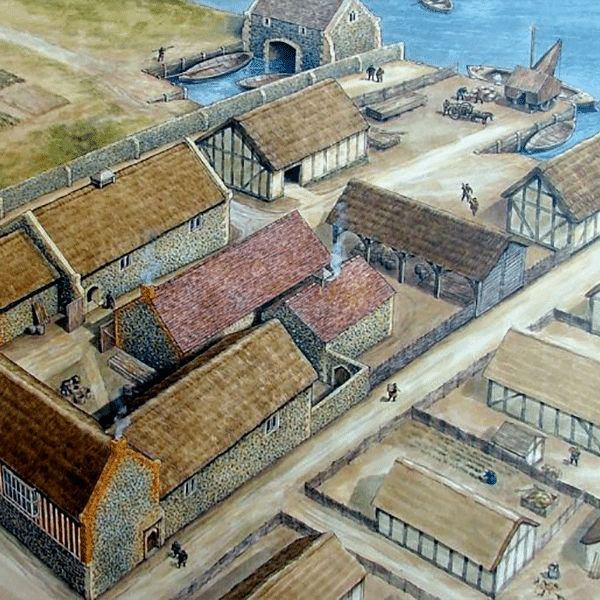
Customers would use the 14th-century Ogee Arch entrance to the hall house – still visible today on Old Barge Yard – and head up the stairs to the magnificent Great Hall. A must-see attraction for anyone invested in Norwich and its history, the Great Hall is 26 metres long and constructed with English oak (using some 1,000 trees). It has seven bays with a crown post roof and was originally decorated with colourful carvings of 14 dragons (only one of which still exists today). Its survival gives us the opportunity to appreciate the impressive skills of the 15th-century timber craftsmen.
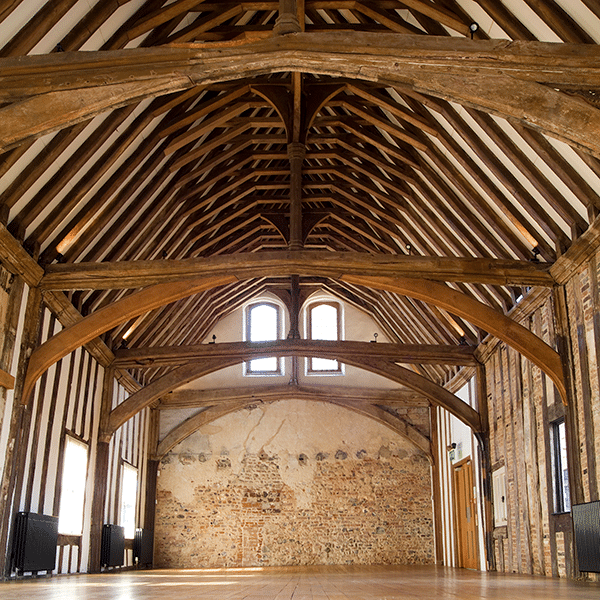
Who was Robert Toppes (c.1400 – 1467)?
We do not know Robert Toppes’s origins or exactly when he was born but he became a very successful entrepreneur after he acquired the Dragon Hall site in the 1420s. His wealth allowed him to rise through the civic ranks and he was an important figure in Norwich. He became the City Treasurer at the age of 27, the Sheriff three years later and was elected mayor four times and burgess MP for Norwich four times. By 1450 he was one of the richest men in Norwich.
Robert Toppes prepared carefully for the afterlife, paying for a great stained-glass window in Norwich’s largest parish church, St. Peter Mancroft; some of the panels can be seen there today. When he died in 1467, in addition to bequests to all city churches, his will stated that Dragon Hall should be sold to pay for priests to pray for his eternal soul.
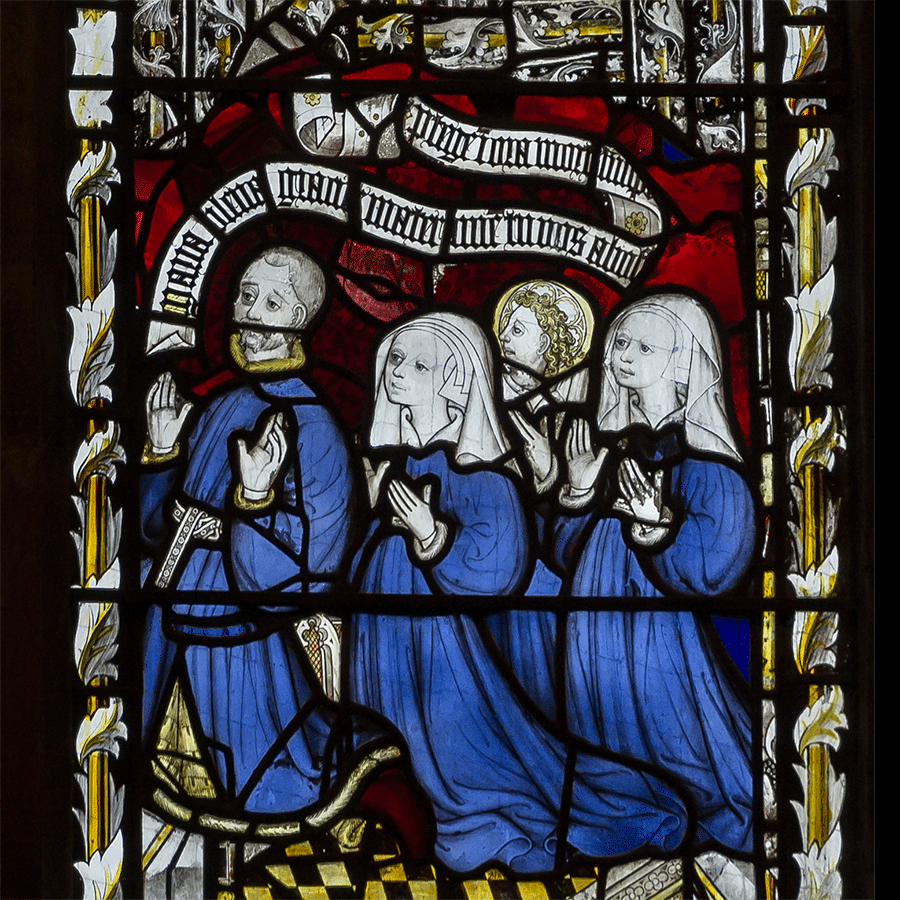
After Toppes’ death in 1467, Dragon Hall was sold off and subdivided into residential units. These became smaller and over-crowded over the years as more tenants moved into the hall, the rear of the site and Old Barge Yard. We know almost nothing of these residents until the first census in 1841, at which point, many families called the ‘Old Barge Building’ (as it was then known) home. The southern end of the hall became The Old Barge pub and by the 19th century some 150 people were living on the site.
One of the most fascinating details within the building from this time is the 50 or so witch marks in the Great Hall and South Hall around all possible points of entry: the windows, doors and fireplaces. These were painted, scratched or burnt into the fabric of the building to protect residents from evil spirits and demons that might try and enter.
In 1937 a Slum Clearance programme removed nearly all the tenements at the rear. By the 1950s at the northern end of the main hall building on the street side there was a butcher’s shop; in the central section was a rectory; and at the southern end was The Old Barge pub.
Image left: View from Old Barge Yard © Thomas Lound
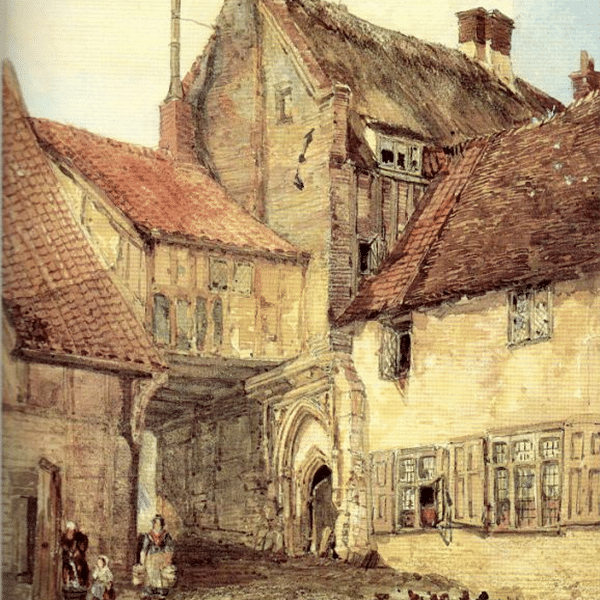
Who lived in Dragon Hall?
Over the years the Dragon Hall Volunteers have amassed a wealth of information about the many residents of the building. These include:
1841: More than a dozen families (and additional lodgers) lived in Dragon Hall. This included William Palmer, his wife and seven children who lived in a sub-division of the Old Barge Room at the southern end of the downstairs building (by Old Barge Yard). Little Agnes was 10 years old at the time of the first census in 1841. In 1911 she is recorded as still there, now 80 years old and the only family member remaining! Agnes’ father was a cordwainer or leatherworker. Records also show that Agnes and her elder sister, Elizabeth, worked as vest makers or tailoresses.
Other resident occupations listed in the 1841 and 1891 censuses include: cowkeeper, joiner, publican, boat builder, dressmaker, sailmaker, wherryman, steamboat engine driver, gardener, railway parcel deliverer, brewery worker, portrait artist, shop keeper.
Image right: 1950s or 60s Swatmans Butchers shop
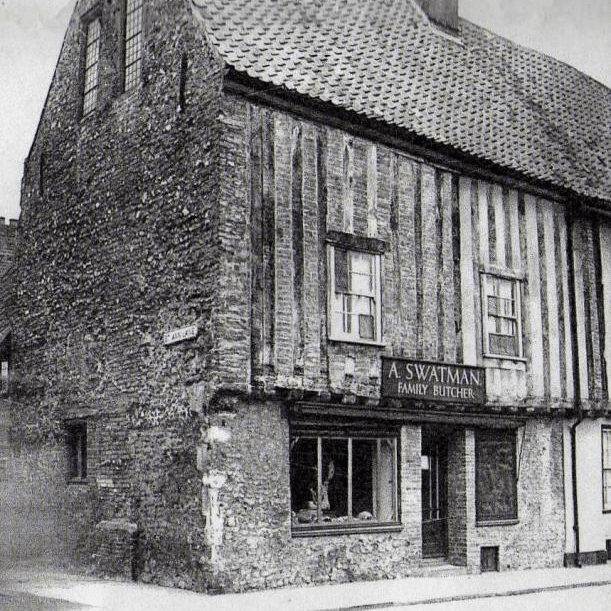
1952: The northern end of the building was occupied by Swatman’s butchers (the family or employees lived in the rooms above). Linda Jones from King Street Community Voices – a Heritage Lottery-funded project which created an archive of the community and stories from the area – has vivid memories of the shop from this time:
‘Swatman’s had the old scrubbed wooden counter, sawdust on the floor, and Mrs. Swatman, who was a very demure tiny little lady, used to sit in a little wood and glass office structure at the end; he would give you the meat with the price written on and you would go to her to pay.’
The middle section of the building was the rectory for the nearby churches of St Peter Parmentergate and St Julian. The last rector, Father Sear, moved out in about 1972. Heather Pfeiffer from the Dragon Hall Volunteers says: ‘I remember one of our visitors telling us it was quite common for mothers to drag their wayward children to the vicar when they could no longer cope and he would give them a good telling off! Fathers were out at work for such long hours.’ At the southern end of the building was the Old Barge Pub, which remained open until 1969.
Image left: Billy Wodehouse, Licensee of the Old Barge Pub in 1933-44
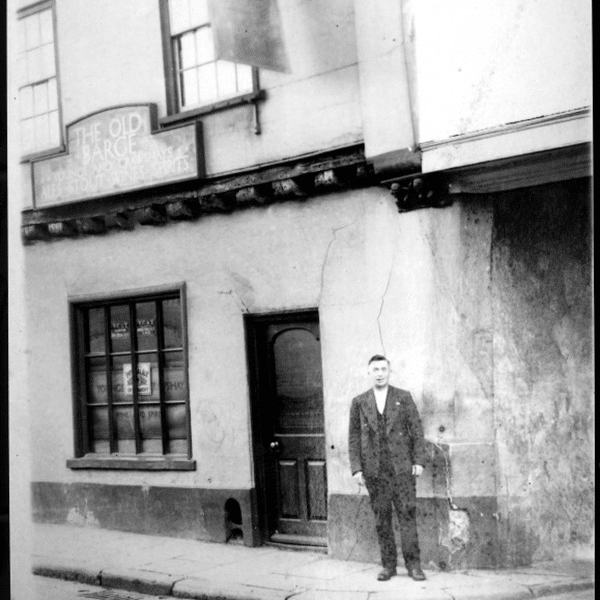
In 1979 the City Council bought the building (which was by then uninhabited) and a major programme of fundraising and restoration began to restore the hall to something like its original state. In 1986 the Norfolk and Norwich Heritage Trust was formed to run the building, now re-named ‘Dragon Hall’, and it became a heritage and education attraction and a resource for the local community.
For a more detailed history of Dragon Hall and access to archive documents and photographs, please visit the Dragon Hall website run by the Heritage Volunteers dragonhallnorwich.org.uk.
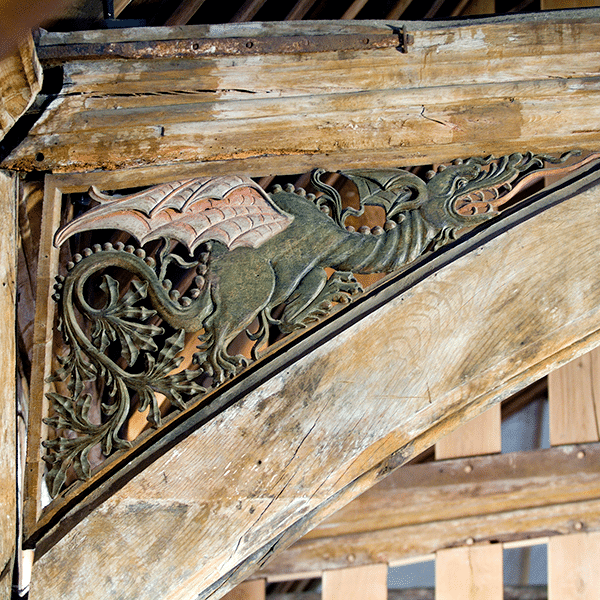
Dragon Hall today
In 2015 National Centre for Writing (then Writers’ Centre Norwich) took over the lease of Dragon Hall, helping to secure its future and upkeep for years to come. Work began on adding a new south wing to mirror the north wing of 2005, which finished in 2018. There are lots of opportunities for lovers of writing and reading from around the world to visit the site, as well as members of the public who wish to admire the history of the building or celebrate a special day within its walls. The old Brewer’s Cottage located at the rear of the grounds has also even been renovated into a two-bed house for visiting writers and artists to use during their visit to Norwich!
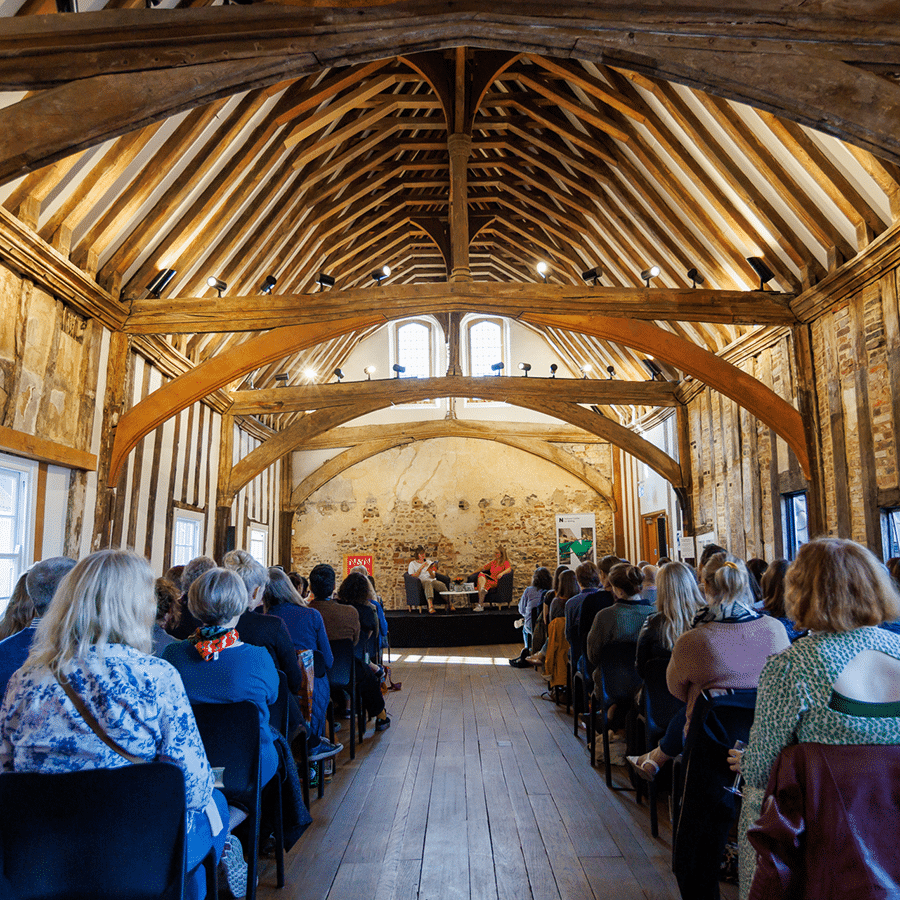
Dragon Hall Volunteers
The history of Dragon Hall is kept alive through the ongoing efforts of the independent Dragon Hall Heritage Volunteers, a dedicated group of local historians and experienced tour guides who are extremely knowledgeable about the building and it’s rich past. They run free guided tours of the building twice a month (currently on hold, but will resume once the lockdown has lifted). They have also compiled a range of fascinating documents detailing the history and context of Dragon Hall’s origins and development, including an archive of photography and artist impressions throughout the ages.
Richard Matthew, who has been a member of the Dragon Hall Volunteers since 2004, is responsible for a much of the census data on the building and its residents:
‘I came to Dragon Hall as a volunteer with no background in history at all. It was getting involved in writing a guide for volunteers that got me (and keeps me!) interested in local and national history generally. It also lead to my writing a book about Robert Toppes.’
The group are always keen to hear from people who have memories to share of Dragon Hall and the King St neighbourhood, and are welcoming of new volunteers – please visit their website to get in touch.





